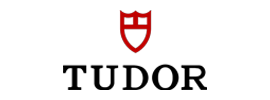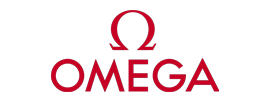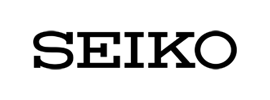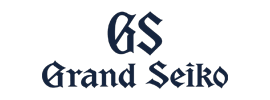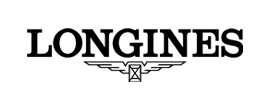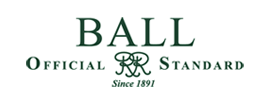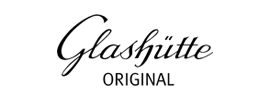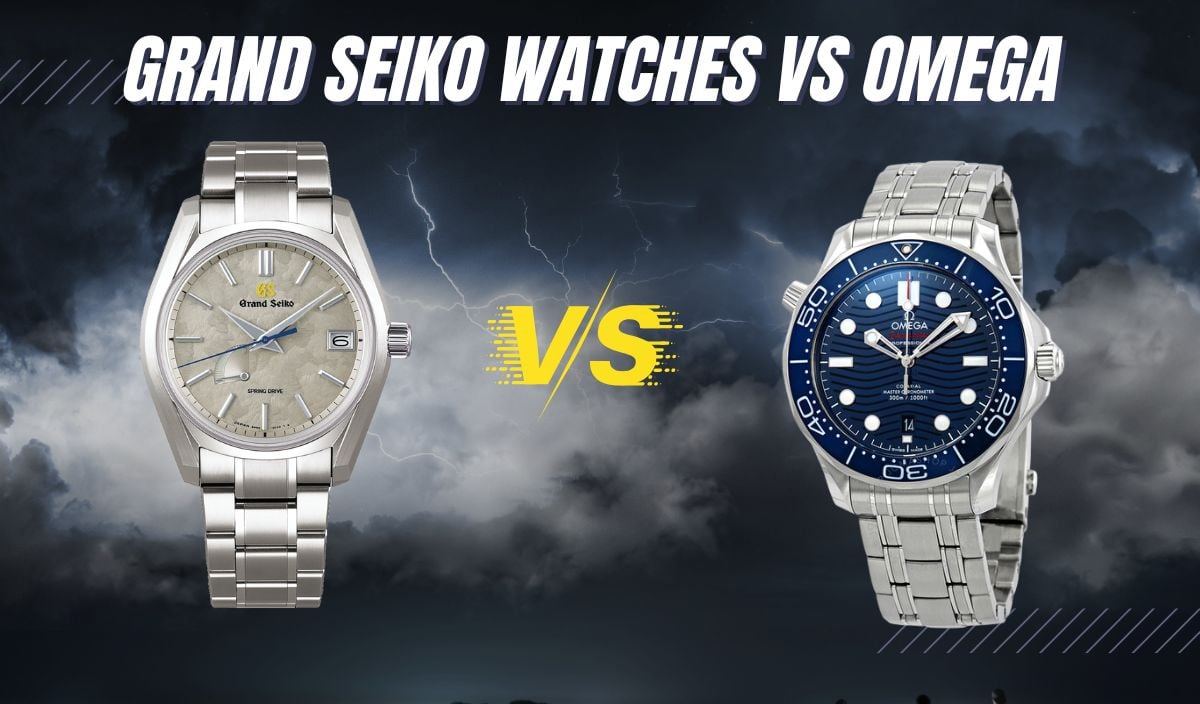
Grand Seiko vs. Omega Watches [Here’s EVERYTHING to Know]
An overview of the Grand Seiko brand
Grand Seiko is a Japanese watch brand that was started in 1960. Both the Seiko and Grand Seiko brands existed under one umbrella until 2017 when the Grand Seiko became an independent brand.
A good comparison would be automobile manufacturer Honda Motor Company. Both the Honda and Acura brands are owned by Honda but are two distinct entities.
Just as the Honda brand appeals to the everyday driver, the Acura brand is a higher-priced luxury offering for a more sophisticated consumer.
Think of Seiko as Honda, and the Grand Seiko as the Acura. The Seiko watch corporation has accomplished much during its relatively short history. From Seiko’s inception, they were manufacturing highly precise mechanical timepieces.
In the 1960s, Seiko beat out many high-end Swiss brands at Observatory Competitions in Switzerland, often placing in the top five for mechanical accuracy.
In 1969, Seiko invented the very first quartz movement. The original model was the Seiko Quartz Astra. The accuracy of these movements was +-5 seconds per month.
Far more accurate than the mechanical wind and automatic movements that were being produced. This level of accuracy in a wristwatch was unprecedented.
The other great draw to the brand was its affordability. The quartz introduction would provide a great challenge to the established Swiss watch brands.
The follow-up introduction of the Twin Quartz and the Superior Twin Quartz models would further Seiko’s success in delivering highly accurate movements.
The “Twin” refers to the two quartz oscillators that were incorporated into the movement, one compensating for the other during temperature changes.
The Twin Quartz introduced in 1978 was accurate to +-10 seconds per year and the Superior Twin Quartz to +-5 seconds per year.
Over the past sixty years, Seiko has improved upon many previous watch manufacturing processes. In 2020, Grand Seiko created the T0 (T-Zero) movement which was the world’s first.
Amongst the innovations achieved, a totally different approach was applied to the manufacture of the movement’s gears. Gears are vital in the precision of the movement.
Whereas previously gears were machined, Grand Seiko employed a process known as MEMS (Micro Electro Mechanical Systems).
This technique is employed for making semiconductors. Metal films are layered like plating to produce perfect gear teeth. Gear teeth precision is measured in microns. This process was also used to manufacture Grand Seiko’s pallet fork and escapement wheels.
The T0 movement features a fully integrated constant force tourbillon on the same axis in the movement. Constant force preserves power in a small spring called a constant force spring which is different from a mainspring.
It uses the repulsive power of the small spring to power a pendulum or balance. The constant force mechanism ensures stable torque which increases accuracy.
The Grand Seiko collection is comprised of five sub-collections. These are Masterpiece, Elegance, Evolution 9, Sports, and Heritage.
The starting retail price for a Grand Seiko is $2200.00. Every Grand Seiko watch houses one of three types of movements.
The “9S” is a mechanical movement that offers Grand Seiko Specification Standards of the accuracy of +4/-2 seconds per day.
These standards are achieved over seventeen days of testing in six different positions and at three different temperatures.
The “9S5A” movement is the automatic version with an accuracy of +8/-3 seconds per day. The second movement is the “9S”. This movement is based on the unique technology of a spring drive.
This technology combines electronic and mechanical watchmaking methods within one movement. Watches carrying these movements are accurate from a minimum of +-.5 seconds per day to +-15 seconds per month.
Lastly is the “9F” which is a hand-assembled quartz movement. Most quartz movements are machine manufactured, so this is a very unique feature. These watches also boast accuracy readings of +- 10 seconds per year.
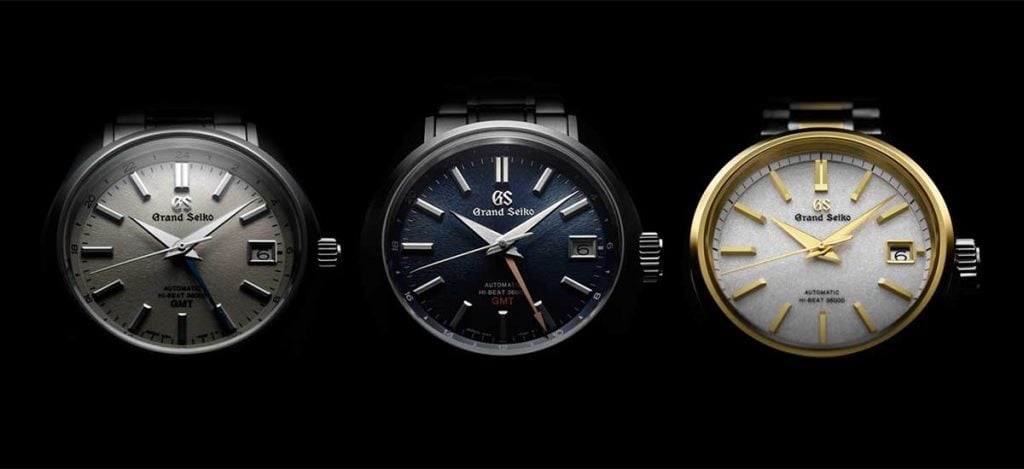
The Omega watch brand
Omega is a Swiss luxury timepiece that is counted amongst the ten most recognizable brands worldwide. Omega was founded in 1848 by Louis Brandt in La Chaux de Fonds, Switzerland.
The watch company did not incorporate the “Omega” name until 1903 and even then it was known as a combination of Brandt and Omega.
The major feature that distinguishes Omega watches from other brands is that each is a master chronometer. To achieve this classification, the movements are not just certified chronometers by the COSC (Swiss chronometer testing institute) for accuracy, but they are then put through more precision testing by METAS. METAS is the Swiss Federal Institute of Metrology.
The movements are put through eight additional tests and must fall within certain parameters of accuracy. Whereas the COSC accepts results of -4/+6 seconds per day after the METAS tests the range is 0/+5, 0/+6, and 0/+7 seconds per day depending upon the caliber size of the movement. The Omega watch line offers over 500 models and has a starting retail price of approximately $5000.00.
A basic “Rail Master” is about $4900.00. and a basic divers watch will run you about $5100.00. Women’s watches start at approximately $6000.00.
There is great depth to the women’s selections with styles ranging from classic models to models adorned with diamonds and gemstones in solid gold. There are four distinct subgroups within the collection. Seamaster, Speedmaster, Constellation, and Deville.
These groups are also made up of subgroups of assorted styles with choices that most would find appealing.
Omega has many notable inventions and patents it has acquired during its history. The company created the first Master Chronometer Tourbillon and presently offers four models that range from $137,000.00 to over $700,000.00 retail.
These handcrafted watches come with either manual winding or self-winding movements and range in case size from 38.7 mm. to 44 mm. These models are inspired by the first tourbillon wristwatch caliber Omega created in 1947.
Unlike the conventional tourbillon movements where the cages rotated once every minute, the Omega rotated once every 7.5 minutes.
This provided greater accuracy leading to the movement being recognized as the most accurate recorded timepiece in 1949.
Another iconic chapter in Omega’s history was the development of the “Moon” watch. This watch was launched in 1957. In 1962, it was the first watch in space when Wally Schirra wore it for the Mercury Mission on Oct. 3, 1962.
Nasa subsequently qualified the watch for manned missions in 1965, and astronaut Buzz Aldrin wore it when he walked on the moon on July 21, 1969.
Thus Omega became known as “The First Watch on the Moon.” Omega offers a five-year warranty on all of its timepieces making it comparable to Rolex in this respect.
Is the Grand Seiko watch technically better than Omega?
Both brands offer excellence in both watchmaking processes and innovation. Grand Seiko has made significant technological strides in incorporating semiconductor manufacturing practices in the production of its watch components and materials.
Also, in the field of combining both mechanical and electronic movement technology, Grand Seiko has achieved world-class results for accuracy.
Grand Seiko is also one of the only watch brands that offer a hand-assembled quartz movement. This coupled with a virtually “Blink of an eye” date change function are significant advancements.
In most watches, when the date is going to change at midnight, the numeric function is either gradual or can be viewed in real-time.
The Grand Seiko anticipates the coming midnight hour and changes at the precise moment the day turns over quietly and with seamless aplomb.
In the discussion of high-end complications, both companies have made contributions and advancements concerning the incorporation of the tourbillon.
Omega with its Master Chronometer Tourbillon and Grand Seiko with its T0 (T Zero) Constant Force Tourbillon.
When comparing both brands for technical prowess, you have a long history of Swiss movement development and innovation juxtaposed with a virtual newcomer to the watch world in the Grand Seiko brand.
I believe the Japanese work ethic and ability to approach watchmaking with a new and fresh mindset have contributed to their success in producing watches that have the ability to compete with many Swiss luxury brands based on technical features.
Omega Aqua Terra vs Grand Seiko Sports collection
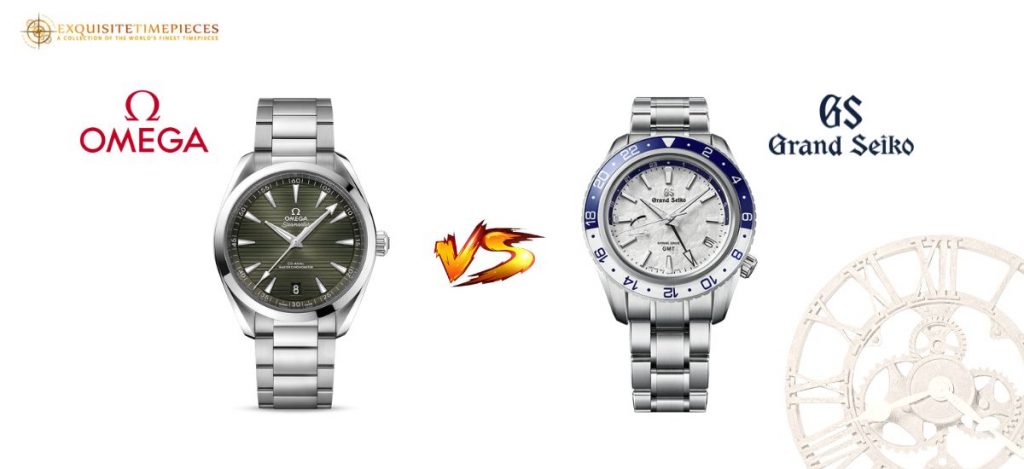
The Aqua Terra is part of the Omega Seamaster collection. These models are water resistant to 150m. (approximately 500 ft.). Cases are constructed of 316L stainless steel and available in either a 41mm. or a 38mm.cCase.
They house a caliber 8900 self-winding (automatic) movement with a power reserve of 60 hours with transparent case backs.
These watches are highly shock resistant and are tested with results that are equal to 5,000g (1g is equal to the force of gravity at the earth’s surface).
Each Aqua Terra also benefits from the best antimagnetic resistant rating among all watches. Omega had set the new standard for this measure in a wristwatch.
These watches are antimagnetic to fields reaching 15,000 gauss. A quick overview concerning this feature is as follows.
The International Standard (ISO769) defines basic magnetic resistance for watches as they must resist exposure to direct magnetic fields of 4,800 A/m (Amperes per meter).
This is a minimal level and equivalent to about 60 gauss. Gauss is a measure of magnetic resistance that takes into consideration the magnetic permeability of the material being tested. Technically, this is called magnetic flux density.
The Aqua Terra is rated at 15,000 gauss (1.2 million A/m). To put that measure in perspective, it is the magnetic field given off by an MRI scanner.
The starting retail price for the Aqua Terra is $5400.00 for a strap model or $5700.00 for a model with a stainless steel bracelet. There are also several styles available for women starting at $5700.00.
For the Grand Seiko collection, I have chosen to use the SBGE201 model from the Sports styles. Granted, this is a GMT model but I wanted a model with a comparable price point and features. This model boasts 20 bar or approximately 660 ft. of water resistance.
The case measures 44mm. and is outfitted with a 30 jewel caliber 9R66 SpringDrive movement (see above for the definition of a spring drive movement) with a power reserve of 72 hours.
It has a sapphire crystal and offers an accuracy of +-15 seconds per month (approximately +-1 second per day). Magnetic resistance comes in at 4800 A/m. A vast difference when compared to the Omega.
I believe Omega holds a slight advantage over the Grand Seiko when comparing features. The Omega, as a Swiss luxury watch, has a more prestigious cache attached to its name. The Grand Seiko is a solid quality watch but has less perceived value than the Omega brand.
Difference between Seiko and Grand Seiko
As referenced in this article, Seiko and Grand Seiko have existed together under the same roof, so to speak, until recently when the Grand Seiko brand has become its own distinct entity. Each may share the Seiko name but they are distinctly different.
You can purchase a Seiko for as little as $100.00 at retail. Given their massive distribution and easy availability, prices may vary considerably. If you are in the market for an accurate everyday watch that looks good and tells time, then this brand fits the bill.
If you don’t care if your watch is of Swiss or Japanese origin, any Seiko watch is a good choice. Grand Seiko would be your choice if you wanted a more sophisticated timepiece that reflects the highest level of Japanese watchmaking.
The finishes and materials, as well as the quality of the movements position these models in the luxury watch market.
Is Grand Seiko a luxury watch?
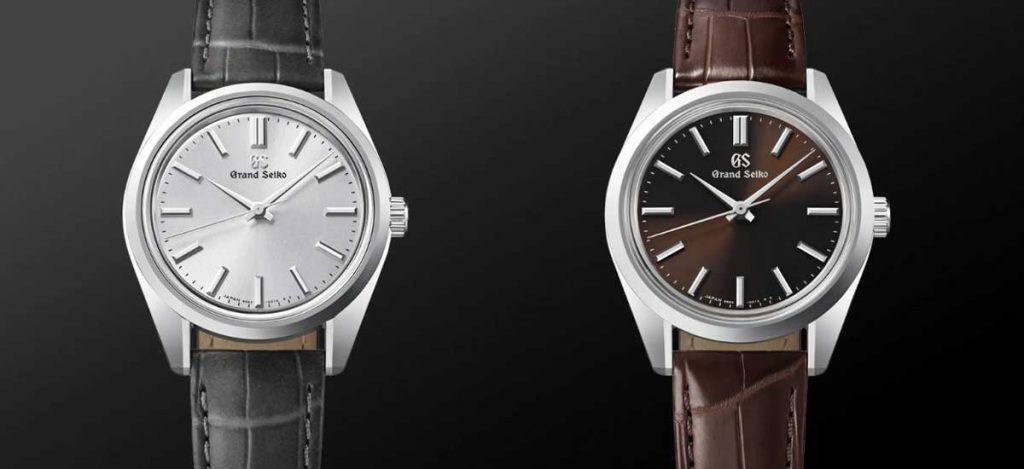
I believe Grand Seiko is a luxury watch. Albeit a more fair question would be, what level of luxury?
Unfortunately, the luxury watch market is dominated by Swiss brands that have been around for far longer than Grand Seiko, and have built brands and names that are highly sought after and in demand.
I will also make the assumption that when wearing a Grand Seiko, anyone noticing the watch might have the immediate observation that they are looking at a much more luxurious Seiko watch.
Explore the
Biggest Pre-Owned Collection of Luxury Watches
In the U.S. market and others, the name Seiko would not elicit thoughts of luxury. A consumer needs to be educated that the Grand Seiko, though carrying Seiko in its name, is unlike the Seiko of their father’s generation.
No one mistakes the prestige of a Rolex or an Omega, for instance. These brands are easily recognizable and reflect the wearer’s taste and success.
Omega vs. Grand Seiko vs. Rolex
For this answer, I deflect back to the sentences at the end of the last paragraph before this question. Rolex is the most recognizable of the three brands with Omega second. Both of these brands have built solid reputations for producing high-end Swiss luxury timepieces.
I believe a consumer seeking a Rolex or Omega will choose to stay on that path and not consider a Grand Seiko as an alternative choice. The Grand Seiko, though an excellent watch, does not offer the allure of a Rolex or Omega.
How does Grand Seiko compare to Tudor?
For those that are unfamiliar with the Tudor brand, Tudor is essentially the sister company of the very successful and popular Rolex brand. Based in Switzerland and founded by Hans Wilsdorf, both continue production today managed by the Wilsdorf Foundation.
With this in mind, both collections share many of the same attributes and innovations exclusively developed by Mr. Wilsdorf and his team of artisans.
For many years, Tudor was viewed as a poor man’s Rolex. Tudor, at the time, seemed to be more of a stepchild than the sister company it truly was.
There seemed to be somewhat of an identity crisis. Fortunately, with the relaunch of the Tudor brand in the United States approximately ten years ago, the brand has made great strides to present its uniqueness and appeal.
With the addition of exclusive in-house movements manufactured by Tudor and not customized ETA movements, the move towards a more distinct brand identity is well underway.
The Tudor brand offers a wide array of choices for both men and women. The entrance price at retail for a gents watch is $2475.00 and $1750.00 for a basic lady’s timepiece.
All of the Tudor watches have self-winding mechanical movements and are COSC Swiss-certified chronometers, with most movements exceeding the COSC standards.
There are some very unique pieces within the Tudor collection that have movements that are Master Chronometer Certified (METAS Certified) just like the Omega collection and as explained earlier in this article. These models are also antimagnetic to 15,000 gausses.
The Grand Seiko collection offers far more sophisticated movements in many of its models. The Tudor models house movements that are manufactured in-house and are high quality in their own right but lack the sophistication of Grand Seiko’s complicated models.
The Grand Seiko also looks and feels more luxurious. In this respect, the Grand Seiko has the edge over the Tudor brand.
Conclusion
In conclusion, both the Omega and Grand Seiko brands are of very high quality. Omega has a distinct edge because of its long history and the reputation it has built during that time.
The Grand Seiko timepieces are great reflections of superior Japanese watchmaking but lack the cache and luxury brand recognition that Omega enjoys.
If you are not pre sold on a particular brand and are open-minded about your next luxury watch purchase, make part of your due diligence a trip to your jeweler or watch shop to try on and learn more about what the Grand Seiko has to offer. You might pleasantly be surprised.
About Exquisite Timepieces
Established in 1998, Exquisite Timepieces is your one-stop shop for all things luxury watches! We are an authorized dealer for 60+ luxury watch brands including Omega, Hublot, Seiko, & Longines! We are proud to showcase one of the world’s largest pre-owned watch collections, including renowned brands like Rolex and Patek Philippe. Check out our brand new watch arrivals here and popular pre-owned listings here.









